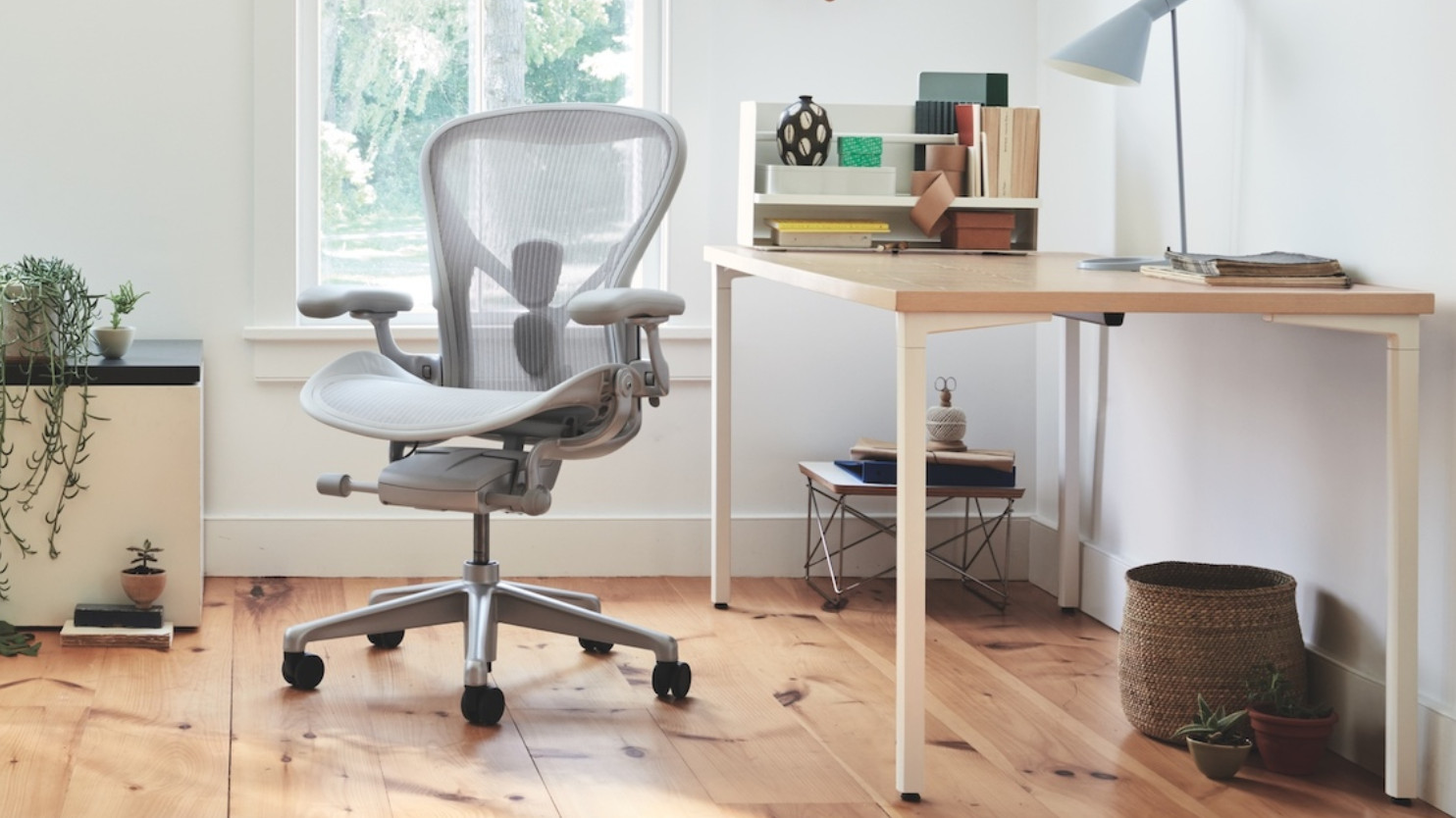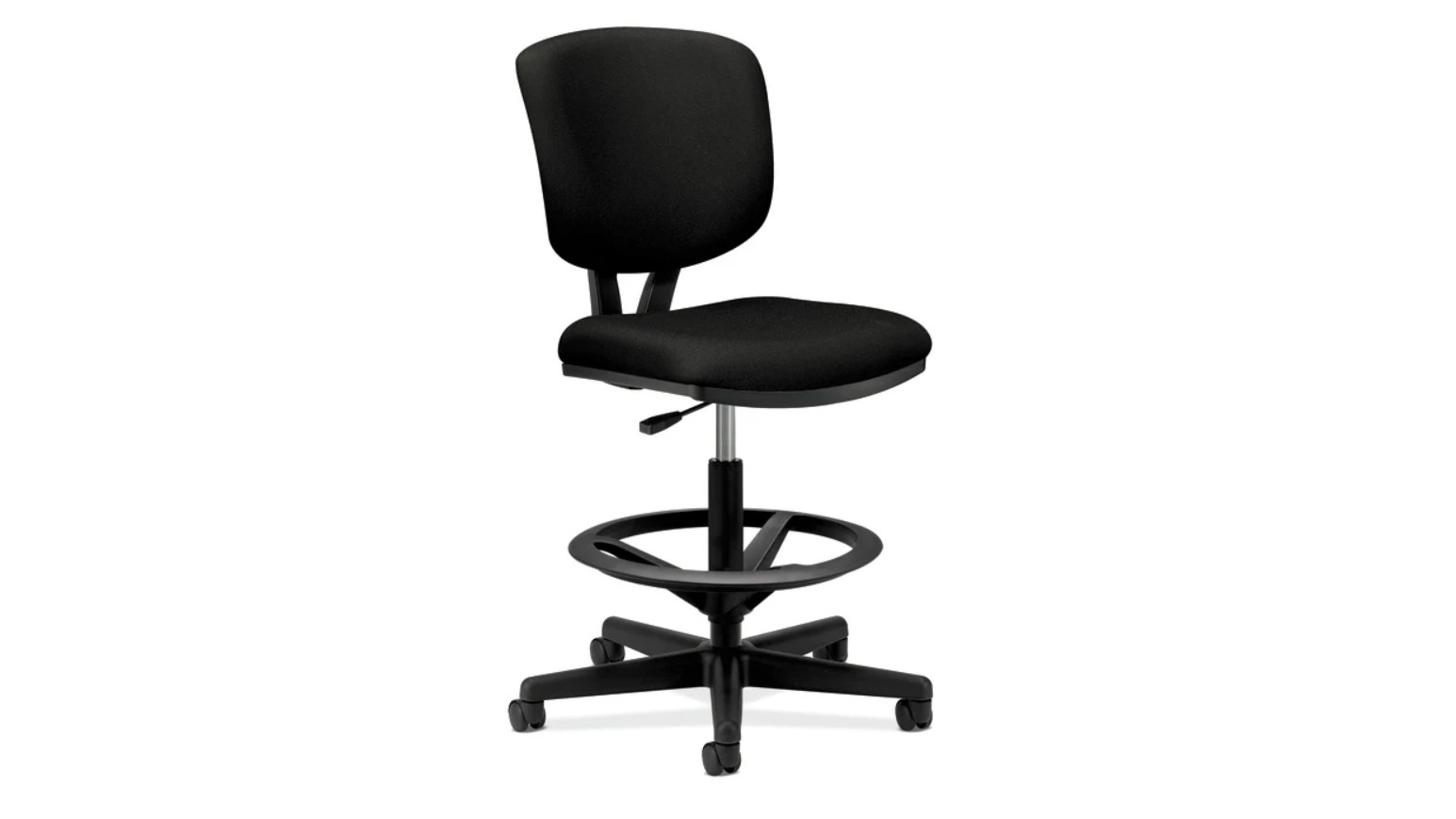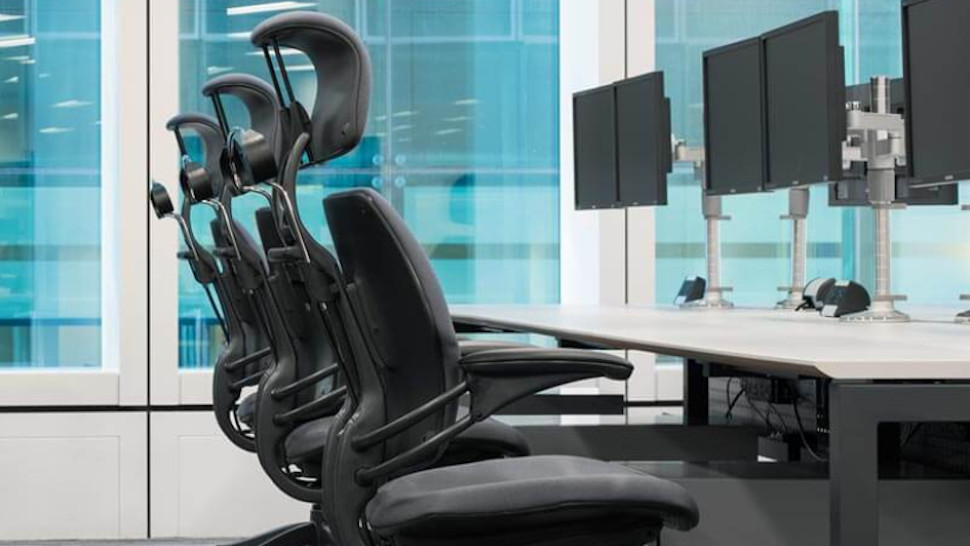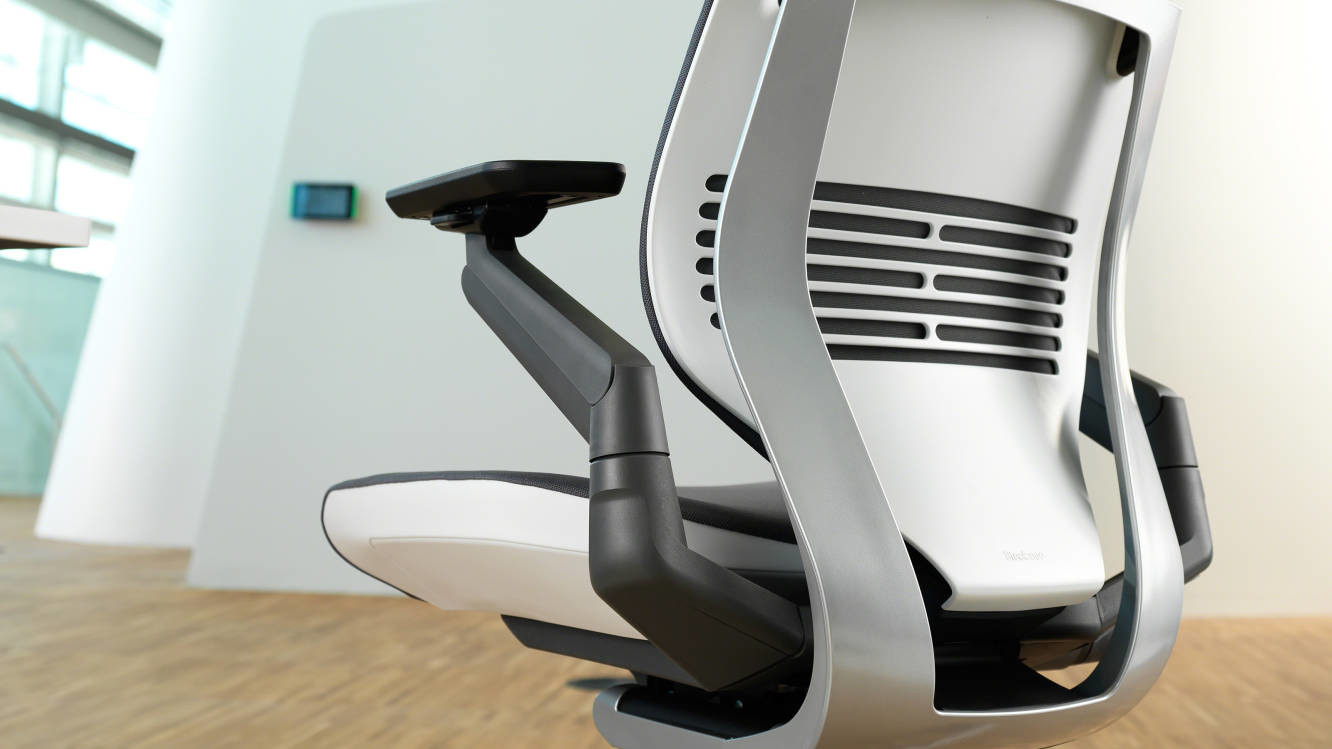How to buy an office chair: 10 tips to help you choose
Approach your purchase the right way or you might live to regret not finding out how to buy an office chair

Selecting the best office chair for your needs is an essential part of staying productive. It doesn't matter whether you spend your days at a place of work of staying productive from home; a top-notch office chair is vital.
Considering how much time we all spend in front of our computers it’s surprising how so many of us also tend to overlook our seating arrangements. Skimping on your office chair can lead to musculoskeletal issues and even aside from the health benefits; a comfortable easing position can also improve your wellbeing and boost productivity too.
So if you’re looking to improve your workflow and enjoy your days spent in front of your laptop, picking the right office chair is worth spending some time over. If you’re wondering how to choose an office chair our following list of pointers will help to get you on the right track. Ideally, be prepared to spend as much as you can budget too. Skimping on your seating is definitely not to be recommended.
- We've also highlighted all the best standing desks

1. How long do you sit down?
This is perhaps the best place to start if you’re thinking about choosing an office chair. It doesn't really matter how long you spend in front of your computer because even short periods sat on inferior seating can be detrimental to your health. However, if you’re sitting in your office chair for shorter periods of, say, up to four hours, it is possible to purchase a more affordable office chair without too many bells and whistles.
The more time you expect to spend in your office chair though requires a little more consideration. Anyone looking to work up to eight hours a day is a good average time period to factor in when buying the right office chair for your needs. This is a sizeable chunk of your day, so be prepared to lookout for an ergonomic chair that will offer a raft of adjustment features, so you can be in a rested position while working.
Anyone working even longer hours, say up to 12 or even 24-hour periods if you’re stuck in a shift or rota that demands it will mean an even beefier office chair solution. Expect to pay a premium for an office chair for this scenario, as it is likely you will need to have optimum levels of adjustment and comfort.
2. Adjustment is essential
Anyone who spends lots of time in an office chair needs to factor into their budget the ability to have plenty of adjustment. Being able to get your office chair into a variety of different positions is critical, especially if you already suffer with back or posture issues after years of sitting on the wrong type of seating. Take a look at the Permanent Contact Back or PCB, which can be useful for supporting your back while you work.
Sign up to the TechRadar Pro newsletter to get all the top news, opinion, features and guidance your business needs to succeed!
Similarly, a lock tilt mechanism can be really beneficial that offers plenty of support, as you stay productive. In addition, it’s worth considering a synchro aspect to your office chair, working to the 1:2 ratio that allows resistance to be set based on your current weight. A multi-synchro seat works on the same principle but offers even more flexibility and can help to boost blood circulation, which is essential if you’re stuck in your chair for lengthy periods of time.
3. Ergonomic is vital
Some office chair designs might look the part, but they’re not always as ergonomic as you might expect. Remember that consider your height, weight and general body shape when you’re shopping for the best office chair. Consider having an adjustable seat height as a vital part of the checklist, while being able to tweak the seat depth is another essential to think about.
Selecting an office chair that features adjustable backrest height will also mean greater levels of comfort. You’ll be able to relax thanks to having a backrest that works with the curvature of the lumbar spine and pelvis too, rather than working against these parts of your body. Having a tilt-able seat is a definite bonus that allows you to tweak the sitting position for optimal positioning. Meanwhile, adjustable armrests complete the overall picture for the best office chair.

4. Additional features
It’s well worth spoiling yourself when you’re shopping for an office chair. Adding some extra cash into the equation will doubtless offer you a much better range of features and accessories that can improve comfort levels. It obviously also depends on personal preference, but think about whether you want a chair with a high or low back. You may well want a headrest too, which can deliver support to the neck and shoulders.
Going back to the subject of armrests – these aren't always something for everyone and some workers find them intrusive. However, select a quality office chair with some well-designed armrests as part of the package and you’ll find that you can sit in a much more rested position at your desk, with less train placed on your forearms.
Adding to the comfort level is an office chair that features a breathable mesh back, especially if you’re used to working in warmer climes. Finally, spoil yourself with a lumbar pump feature that can help with lower back pain by offering extra support that can be tweaked as needed.
5. Aesthetics matter
While choosing the right office chair is mainly about just how comfortable you’re going to be while you stay productive, think about how it looks too. If you’ve got a home office set-up there’s nothing more depressing or uninspiring than having an office chair that looks sorry for itself. If you’re keen to boost your productivity there’s nothing more invigorating that walking into the room and seeing your dazzling new chair inviting you to sit down and get started.
Everyone has different tastes; so once you’re checked off how good your office chair will be for your health, spend some time considering the design, colours and materials used in its construction. While some folks are eschewing leather these days, there are decent vegan and faux leather options available now too.

6. Decide on your budget (and consider second-hand)
The most basic consideration when buying an office chair is to first decide how much you want to spend – because a lot of other factors and decisions will directly relate to your available budget.
There are certainly a wide range of different chairs out there, with price tags ranging from very cheap to incredibly expensive. Some of the top office chairs can cost in excess of a thousand dollars (or pounds), and indeed there are executive chairs which might run to two or three grand.
Although in our opinion, there’s really no need at all to go much over $1,000 at the most, unless money is no object and you want to make a statement of some kind (but bear in mind that some of those super-pricey executive chairs focus on finish, trimming and loads of padding at the expense of real ergonomics – so even then, tread carefully).
Similarly, at the budget end of the market, you can pay less than $50 for an office chair. However, we wouldn’t recommend a bargain basement product either, unless you’re on an extremely tight budget of course, and needs must. Realistically, you should be looking to spend around the $200 mark minimum – or thereabouts – for a decent office chair. (And a bit more if you want something really sound, ergonomically speaking – more on that later – which will likely pay-off in the long-run in terms of its durability and lengthy guarantee; buy cheap, buy twice, as they say).
An alternative route the budget-conscious may wish to consider is buying a second-hand chair. This could be a tempting way to go with the high-end office chairs which can be very costly, simply because you can get them at far more reasonable prices. With second-hand, your budget will go a lot further, and after all, generally speaking those premium chairs are built to last a long time, so having some miles on the clock may not matter much.
The downsides, of course, are that you don’t get that really long manufacturer guarantee, and the chair is used, so the condition may not be optimal. But still, if you buy from a trusted and well-reviewed retailer that deals in second-hand office chairs, you can end up with a bargain of a seat which is as good as new. As always, though, there are risks with buying used equipment, and we’d certainly try to buy from an established retail outlet rather than just some random on eBay.
7. Type of chair
Another major consideration is, naturally enough, the type of chair you want. There are many different designs, and your workspace might dictate some requirements in this regard.
For example, do you have very little space and a small desk? Or maybe even a standing desk? If so, there are compact task chairs, or even stool-type seats, which will be your best bet in this case. There are also chair designs which don’t have armrests, and may not have a headrest. Are these elements important to you? You need to bear all these kind of considerations in mind when selecting the right chair for your particular needs.
Another key point here is the type of finish: do you want a fabric chair, or perhaps a leather model? The latter looks plusher, copes better with spills and the like, being easy to clean, and may feel nicer in some respects – but a good quality fabric will be cheaper and will perform better in hot weather. Speaking of the latter, if breathability is really important to you, then you’ll want to hunt for a chair with some kind of mesh back.
Some of the best office chairs also have luxury features you might be tempted by, like built-in heating pads for those more unpleasantly cold mornings first thing at work.
8. Are ergonomic considerations really important?
We can't underline the importance of ergonomics for your new office chair. Consider a whole range of various adjustments for every different part, and pick one that’s designed with ergonomic performance in mind (these do, naturally enough, tend to be the more expensive models).
Of course, every office chair is designed and tested to be somewhat ergonomic and comfortable – you’d assume, anyway – but some only offer the most basic of adjustments, namely being able to change the height of the seat, and perhaps the tilt of the backrest.
Ergonomic models will go much further, and allow for adjustment of the positioning of the seat pan (sliding it forwards or backwards), and the same for the backrest, as well as the tension of the recline action pertaining to the latter. You may also be able to adjust the height or positioning of the armrests, and the headrest, and perhaps more besides.
The point is that with these chairs, you can really tailor the seating position to your own personal needs and body shape. Often ergonomic models benefit from clever design touches and technologies, too. For example, the Humanscale Freedom office chair has a self-adjusting backrest that constantly adapts to the way you’re sitting, which is a smart innovation indeed.

9. Don’t underestimate lumbar support
While budget chairs won’t have any kind of adjustable lumbar support, with a midrange or above office chair, you should look for this feature. Some chairs may have it as an optional extra, and it’s well worth the additional (usually relatively small – maybe $30 or so) outlay.
That’s because the positioning of your back is crucial when it comes to a comfortable seat, so the ability to change the backrest to better accommodate your lower-back is a feature most definitely worth having if at all possible. Some more expensive chairs, like the Freedom we just mentioned, may even have a self-adjusting mechanism for the backrest.

10. Try out chairs if possible
Naturally, it’s true that office chairs are a subjective matter in some respects – one person might find a particular seat firm and comfortable in terms of the padding, while another might think it’s too hard and unforgiving. The same can be true about the design of the backrest or other elements.
This being the case, if it’s at all possible, take the time to go to a bricks-and-mortar office outlet or retail shop in order to try out a chair you’re thinking of buying, if you can find it on sale. Or just have a sit in various chairs to give them a quick test – this can be a useful exercise in giving you a better idea of what you might want to look for.
That said, sitting in a chair for five minutes is no cast-iron guarantee of suitability – you’ll only really know the truth of how well it suits you after using it for an entire day (or more to the point, for a number of weeks, really). Still, you can at least get some idea of how the land lies, and indeed eliminate a prospective purchase that you know doesn’t feel right from the off.
When you buy your chair, if it’s from an online retailer, many offer 30-day money-back guarantees (or even longer ones), and that can be very useful for returning something that isn’t suitable for you (although you will likely have to fork out shipping costs, but still, that’s certainly better than forfeiting a great deal of cash on an expensive chair that doesn’t work out, or being forced to try to sell and ship it via eBay).
- We've also featured the best business projectors and the best portable projectors
- Check out all the latest cheap gaming chair deals and sales
- These are the best gaming chairs around
Darren is a freelancer writing news and features for TechRadar (and occasionally T3) across a broad range of computing topics including CPUs, GPUs, various other hardware, VPNs, antivirus and more. He has written about tech for the best part of three decades, and writes books in his spare time (his debut novel - 'I Know What You Did Last Supper' - was published by Hachette UK in 2013).